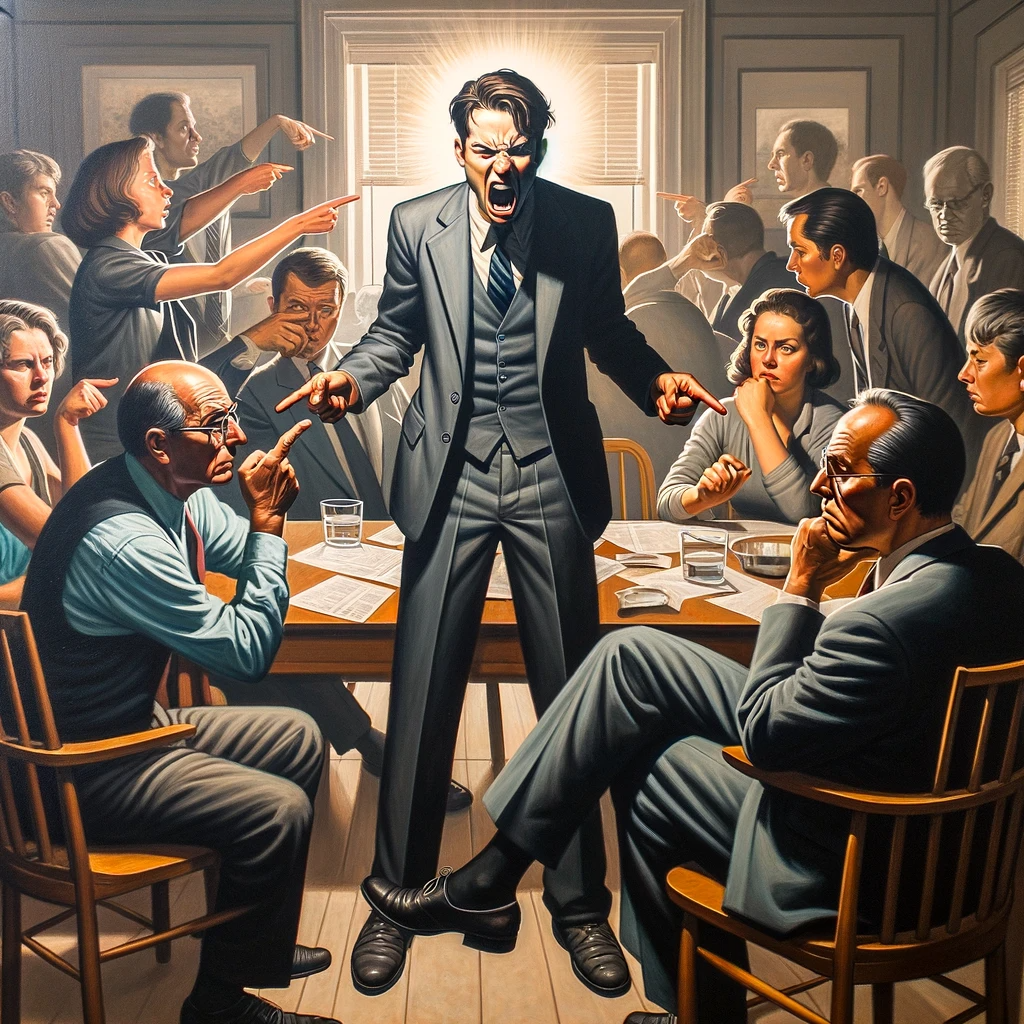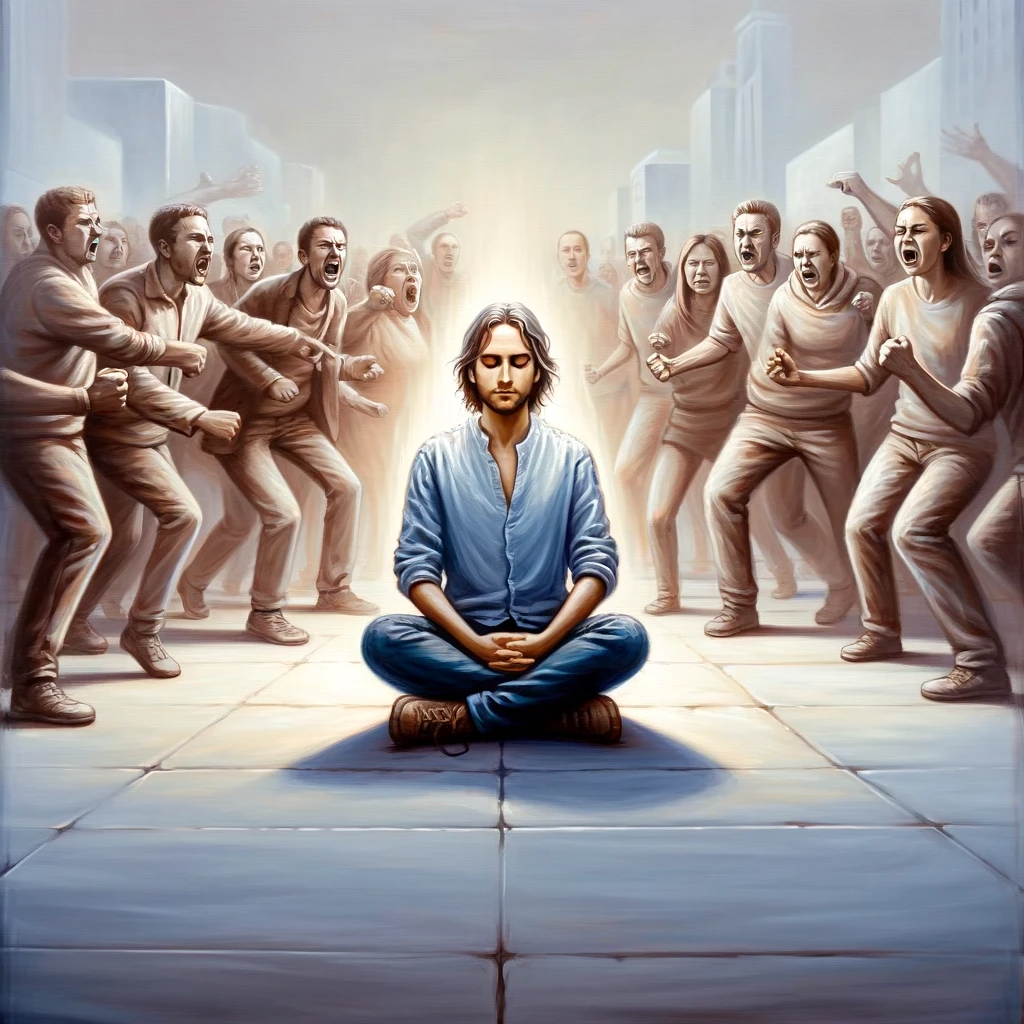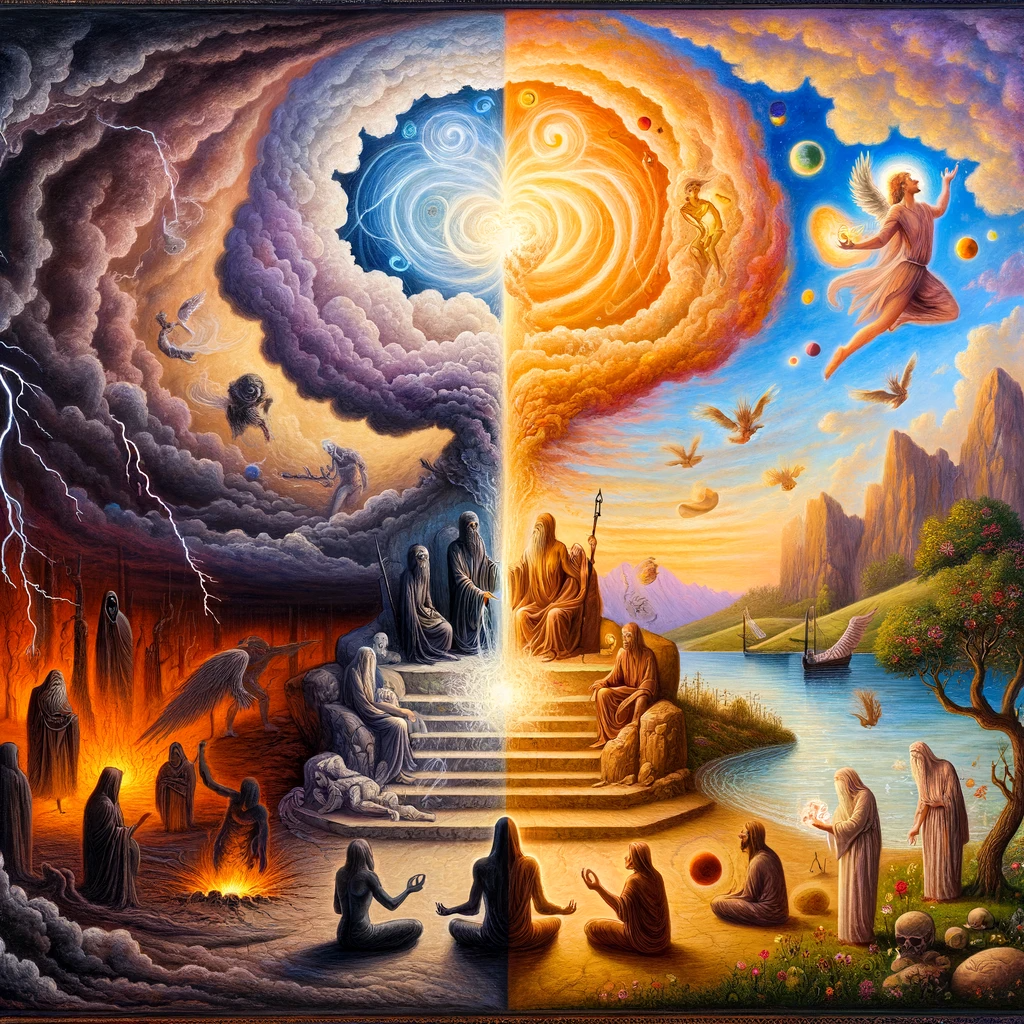Identifying the causes of anger and mastering the art of patient acceptance to conquer anger.

In the Buddha’s Third Noble Truth, he taught that true cessation of human suffering exists.
The suffering of jealousy ceases with the practice of rejoicing.
See: The Joyful Cure: How Rejoicing Leads to the Cessation of Jealousy
The suffering of attachment ceases by meditating on impermanence.
The suffering of negative Karma ceases by practicing purification and moral discipline.
And the suffering of anger ceases with the practice of patient acceptance.
Eckhart Tolle’s Pain Body
For most people, anger comes easily, and meditating on anger is nearly effortless. Once anger takes over, it becomes self-sustaining.
Eckhart Tolle identified this phenomenon and gave it a name, the Pain Body.
He found the concept useful because it allows people to disidentify from anger and pain, which facilitates managing symptoms more effectively.
What is Anger?
The following is adapted from How to Solve Our Human Problems by Geshe Kelsang Gyatso.
Anger is a focused mind that identifies an animate or inanimate object, finds it unattractive, exaggerates its bad qualities, and wishes to harm it.
For example, incels, involuntarily celibate men, are angry at women.
They identified the objects of their anger, women who reject them.
They find these women’s rejection unattractive, immediately transforming the woman they desired into a woman they claim not to be attractive.
They exaggerate these women’s imagined bad qualities. And often, these incels want to harm the women who reject them, often through fantasies of subjugation and even outright violence.
In its milder forms, this anger expresses itself through vile comments on internet forums and the consumption of degrading pornography.
In its destructive forms, it comes out in acts of terrible violence against women.

The many faults of anger
Anger, jealousy, and attachment are all disturbing states of mind that cause suffering.
These emotions make everyone afflicted engage in negative actions that lead to untold suffering for themselves and others.
Further, these emotions block any progress on the spiritual path leading to happiness or peace of mind.
- Anger is a painful state of mind, a source of tremendous suffering.
- Anger makes people tense and uncomfortable.
- Anger makes it difficult to sleep, and even when sleep comes, it isn’t restful or refreshing.
- Anger makes it difficult to enjoy activities, other than violence and cruelty, inflicting pain on others for petty revenge.
- Angry people often lose their freedom of choice, driven to action without concern for consequence.
- Angry people live in a state of perpetual victimhood, blaming others for their misfortunes and even the anger itself.
- Anger destroys relationships.
- Anger makes most people wish to retaliate against those perceived to be the cause of harm. The desire to retaliate often causes people to expose themselves to unnecessary personal danger. Actual retaliation harms others and fails to calm the angry mind.
- Anger leads to personal conflict, generally causing damage to both parties. Even the victor in violent conflict is often bloodied and weakened.
- Angry people have no friends. They exploit acquaintances and servants for specific needs, but every interaction becomes transactional, devoid of connection or closeness.
- Anger transforms people into enemies.
- Angry people make enemies of anyone who fails to submit willingly to their demands.
- Angry people portray others as evil for resisting their will.
- Angry people must always be vigilant against potential attacks from rivals, as enemies of their own creation always surround them.
- Angry people die alone, forsaken and forgotten, shunned by all who previously cared for them.
Angry lies we tell ourselves
Most people blame others for their anger as if the other person is the cause for their internal emotional state. In fact, most people don’t question the “fact” that other people cause their anger.

It’s a lie. Each person is responsible for their own reaction.
Anyone who fails to take responsibility for their anger is completely powerless to overcome it.
They become a victim in their own mind, trapped in their angry thoughts, and they project their weakness and victimhood onto everyone else.
Perhaps another person has behaved inappropriately, acted in violence, stolen personal property, or committed any of a number of egregious acts. That person’s behavior may be the trigger for anger, and the anger may seem justified and appropriate to the situation.
However, justifiable anger based on injustice or another person’s behavior is still not the cause. The actual cause is a reaction within the person, and that person has a choice—feel angry, or practice patient acceptance and overcome the anger.
The facts remain that anger still has the full list of negative effects, even if it seems completely justified and appropriate to the circumstances.
Negating and overcoming anger when confronting injustice doesn’t make someone weak or more prone to be victimized. It makes them stronger and more resilient when negative Karma comes their way.
Anger is not protection
Many people carry their anger as a sword or a shield. They want others to fear their wrath as an inducement to behave appropriately.
Some people even use anger to manipulate others, forcing people to comply with their wishes out of fear of retribution, believing anger makes them powerful.
Sadly, many people bludgeon their way through life, manipulating everyone they encounter with their anger, and they wonder why no one likes them or believes they are a good person.

Anger is the defining characteristic of an asshole.
While this makes some people imagine they are safe and protected, this safety is an illusion. People who are determined to act in bad ways are seldom deterred by someone’s angry temper.
In fact, many people will intentionally provoke angry responses to get opponents and rivals to act rashly and commit mistakes. Provoking an enemy to act impulsively is mentioned in The Art of War, by Sun Tzu.
Other Manifestations of Anger
Anger is like fire. It starts as a spark, and if fed with confirming thoughts, and given enough time, it grows into an inferno.
However, like large fires in nature, it can grow out of control and consume everything and everyone in its path.

Buddhist practitioners seek to squelch fire at the initial spark. They abhor and avoid all manifestations of anger, including rage, spite, resentment, aggression, and harmfulness.
Many other negative states of mind, spring from anger, each has its own characteristics, and each is disturbing in its own way.
- Rage is uncontrolled anger.
- Resentment is formed when anger is sustained without forgetting it. The end goal is to create the desire to retaliate.
- Spite is when anger has hardened into resentment, and the person wishes to speak harshly.
- Aggression is an increase in anger that motivates the desire to harm others either physically or verbally.
- Harmfulness is the mental state that wants to see other beings suffer, the opposite of Compassion.
Patient acceptance overcomes anger
Patient acceptance is the practice of enduring hardship, suffering, and insults without becoming disturbed or reacting with anger.
It serves as a direct antidote to anger and aversion, by maintaining a calm and composed attitude towards life’s difficulties.
It involves tolerating harm or discomfort without resentment, and understanding that anger only leads to further suffering.
It’s one of the most challenging, and yet most rewarding practices on the Buddhist path.

Practicing patient acceptance requires mindfulness and awareness of one’s mental state. By being aware of the rise of anger or frustration, practitioners can observe these emotions without taking action based on them, understanding anger’s impermanent nature.
Advanced practitioners seek to stomp out the fire of anger at the initial spark. The longer the fire is allowed to burn the more it will consume and the harder the flame is to extinguish.
When anger arises, practitioners remind themselves of the many faults of anger as outlined above. This practice is rooted in the recognition that suffering is part of existence and often a result of one’s karma; practitioners learn to accept and endure it without negative emotions.
Most who practice patient acceptance also make vows against retaliation. Besides preventing negative actions leading to bad Karma, the vow against retaliation quiets the mind as revenge thoughts become pointless wastes of energy.
Patient acceptance must be applied in everyday situations, from enduring minor inconveniences to facing significant hardships or dealing with difficult people.

Angry people view patient acceptance as a sign of weakness, but anyone who sincerely practices patient acceptance quickly recognizes it takes much more strength to endure than it does to lash out in anger and false bravado.
Patient acceptance turns challenging situations into powerful lessons for developing patience, compassion, and wisdom.
Patient acceptance is closely linked to compassion (karuna). By enduring suffering without anger, one cultivates a deep sense of empathy for others who suffer and a desire to help alleviate their suffering.
Cultivating patient acceptance brings long-term benefits, such as inner peace, resilience, and a more profound ability to cope with life’s challenges.
Patient acceptance is a fundamental practice in Tibetan Buddhism and is considered one of the six perfections (paramitas) that a Bodhisattva should cultivate on the path to enlightenment.

